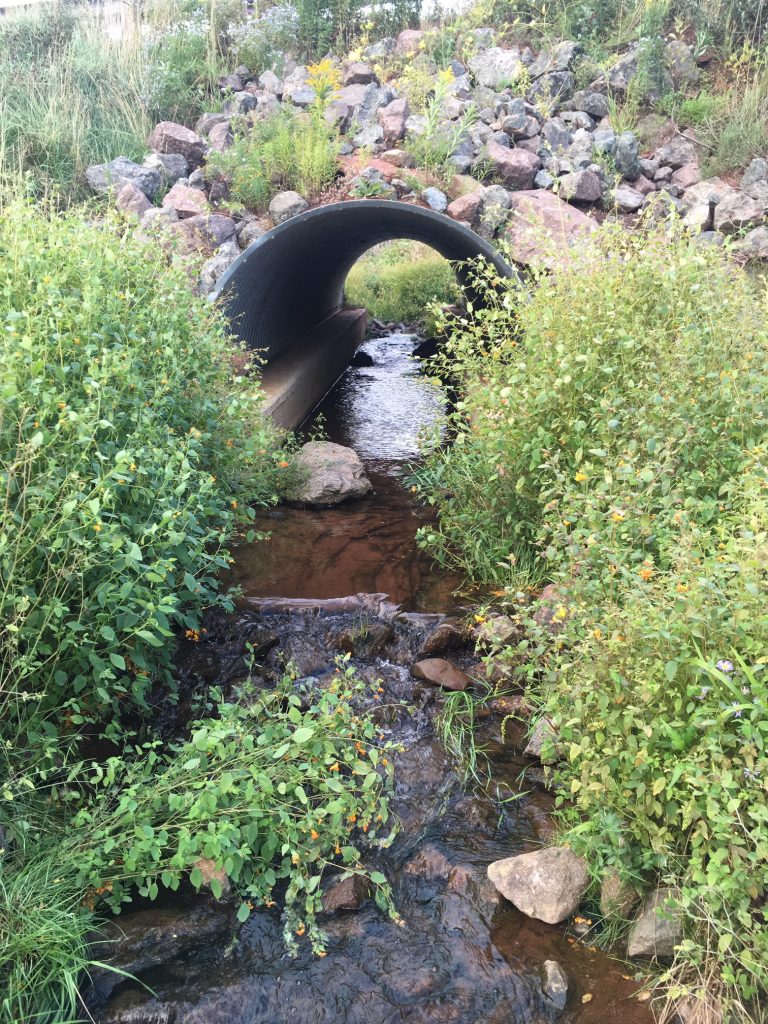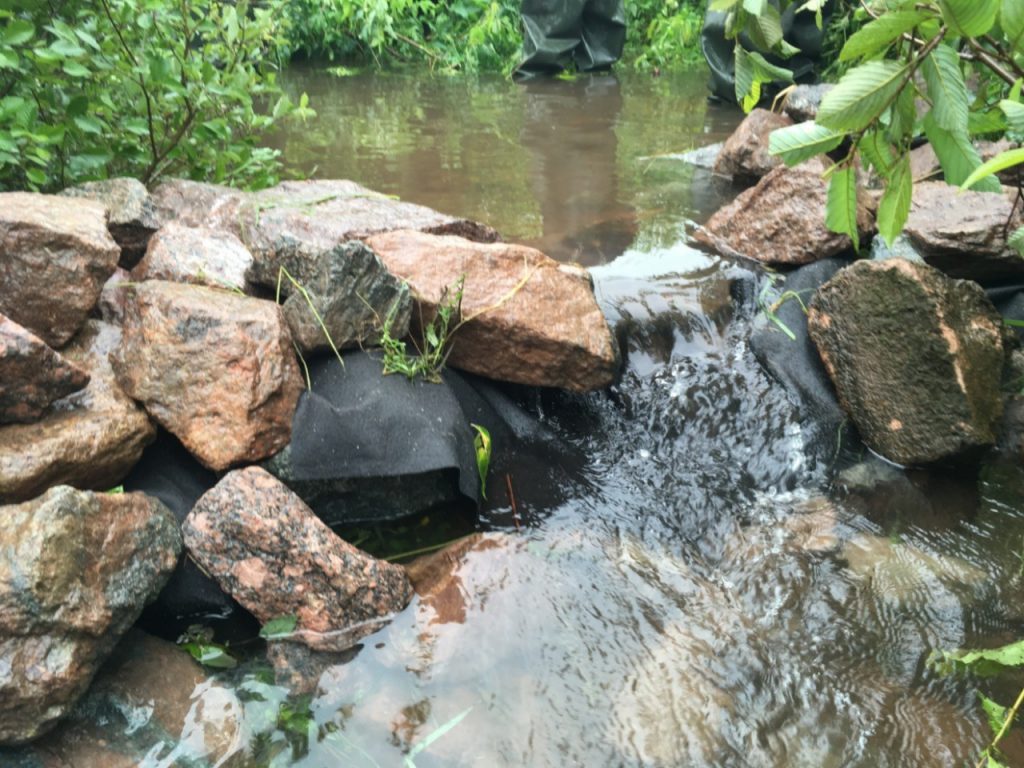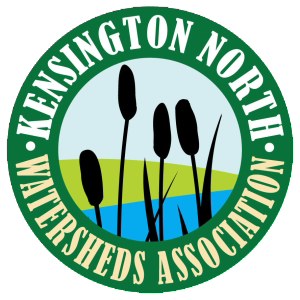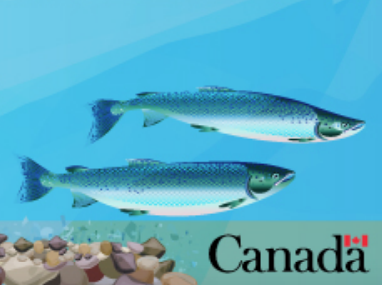The streams around Kensington are the least forested on the Island and surrounded by the most farm fields. Agricultural inputs of nitrates and sediment runoff make it a challenge to maintain healthy ecosystems in the streams.
We walk the majority of the stream systems every summer. Our stream season begins on June 1st and ends September 30th. These restrictions keep us out of the water when trout or salmon are spawning in the fall and when the eggs hatch in the early spring. There aren’t any salmon streams in our area, but there are plenty of brook trout.
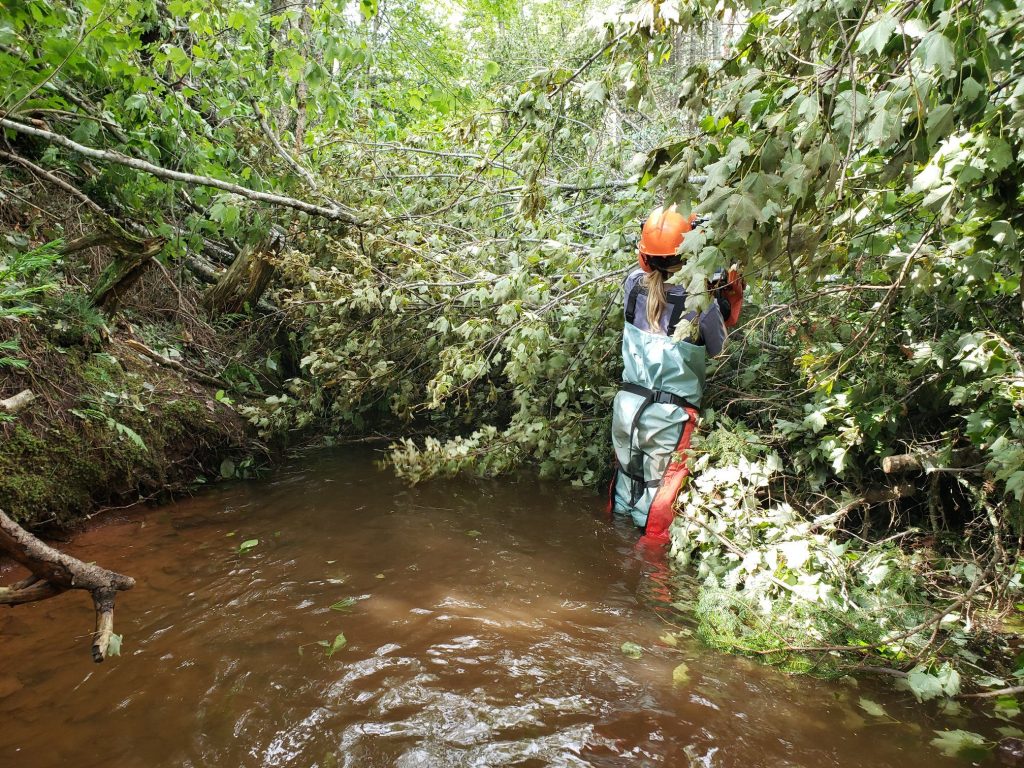
The aim is to clear obstructions from the stream, but without taking too much out. As our technical manual says, streams and the animals in their ecosystems require complexity or “roughness” which is large pieces of wood and rocks. Many of our streams have so much silt in them you can’t detect any rocks, it’s just a smooth channel of silt. Woody debris create turbulence in the water that helps to sort the gravel from the silt. Exposed gravel is very important to the stream because that’s where trout lay their eggs.
On sections of the stream that are too slow, too shallow and with too much sediment on the stream bed, we install brushmats that narrow the channel to increase the velocity of the water. The intention is that the water on the outside of the bend will deepen and create a pool and also undercut the bank. Undercut banks are a perfect place for trout to hide out, as long as the banks have tree roots to hold them in place and not collapse into the water.
Stakes are hammered onto the point bar of the stream where sediment is naturally depositing. Then conifer branches are laid on top of the point bar and tied down. By the next summer a brush mat can be completely covered in new sediment and growing riparian plants on top of it. Only the top of the stakes let you know that some watershed work had been done there.
We also try to improve the connectivity of the stream so that trout can get as far upstream as possible. Some stream crossings have been completely rebuilt with the aid of contractors, other get removed, some stay in place and we build rock dams downstream to raise the water level enough so that trout can make it into the culvert.
